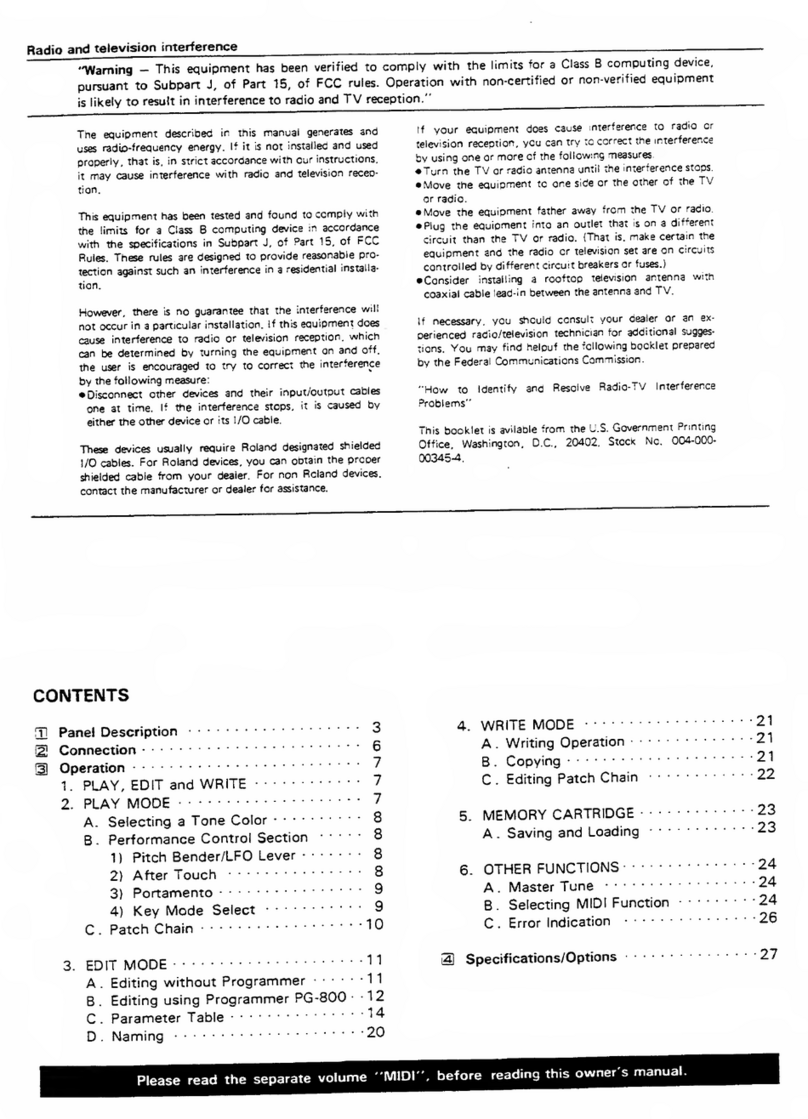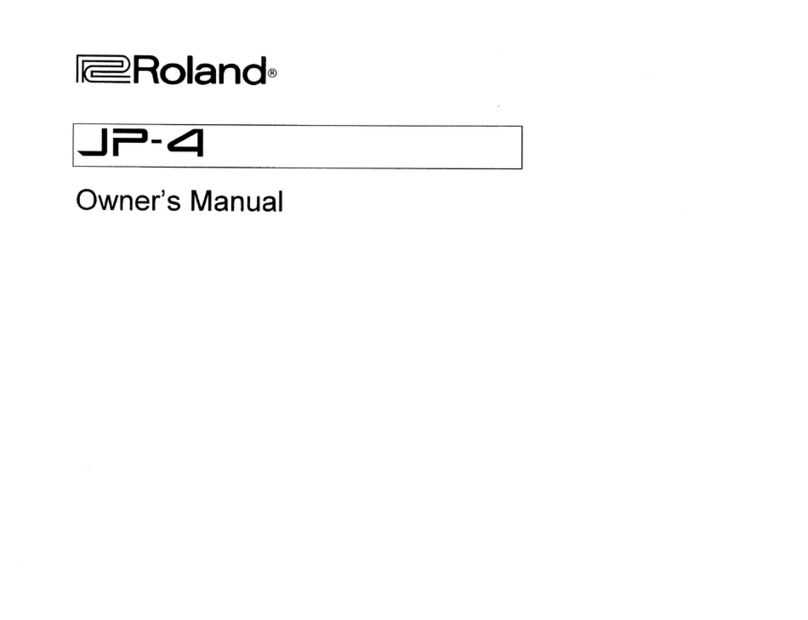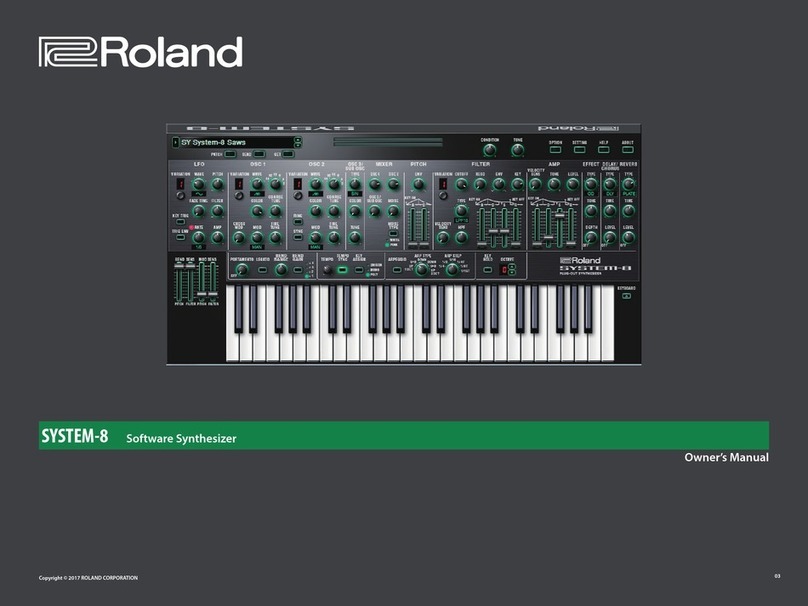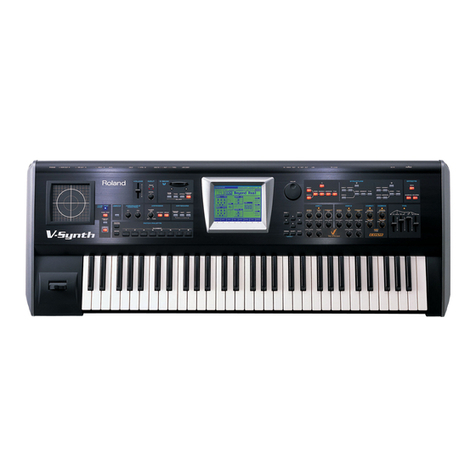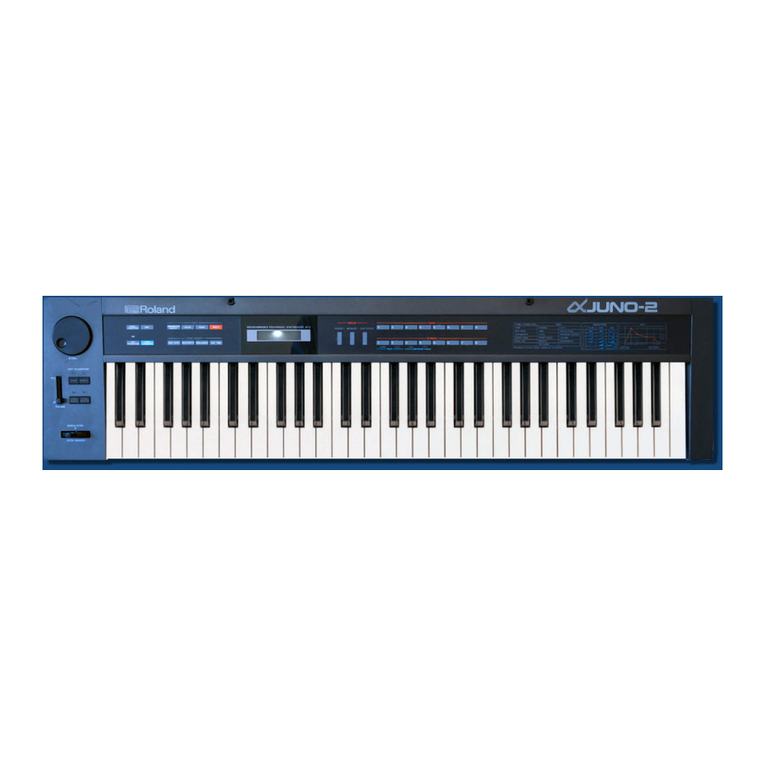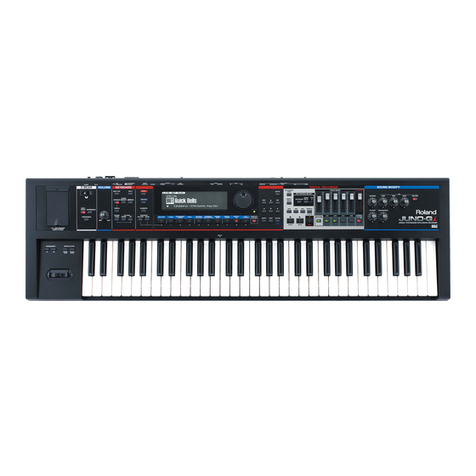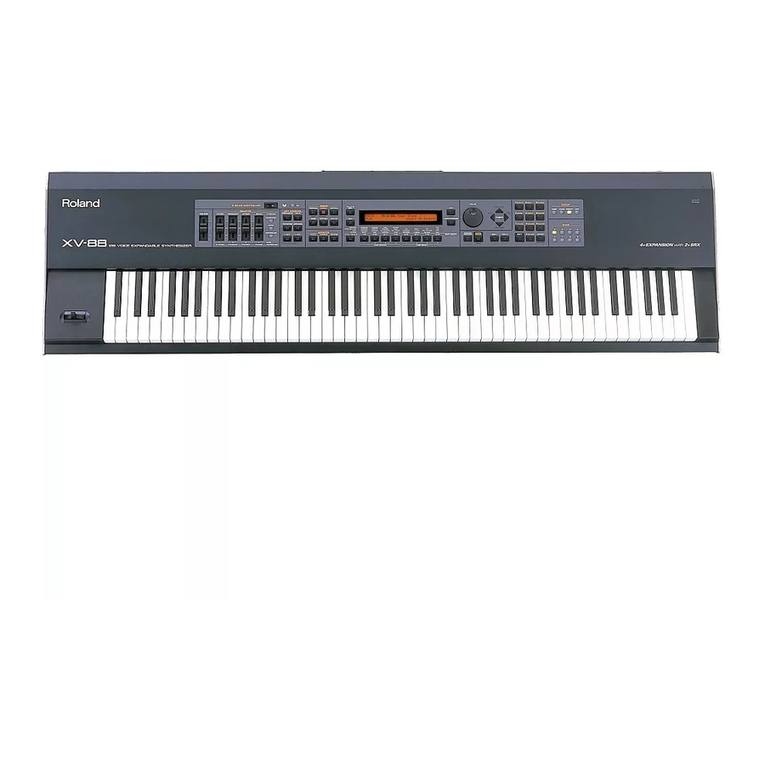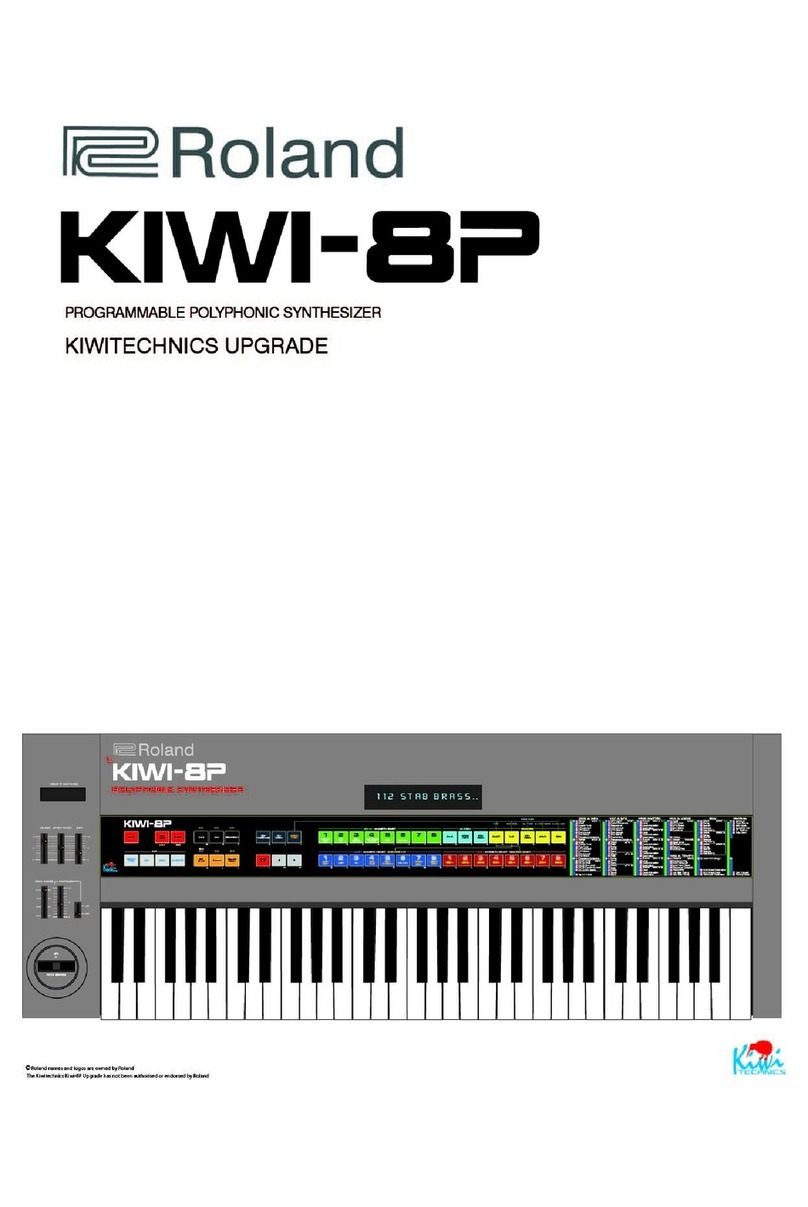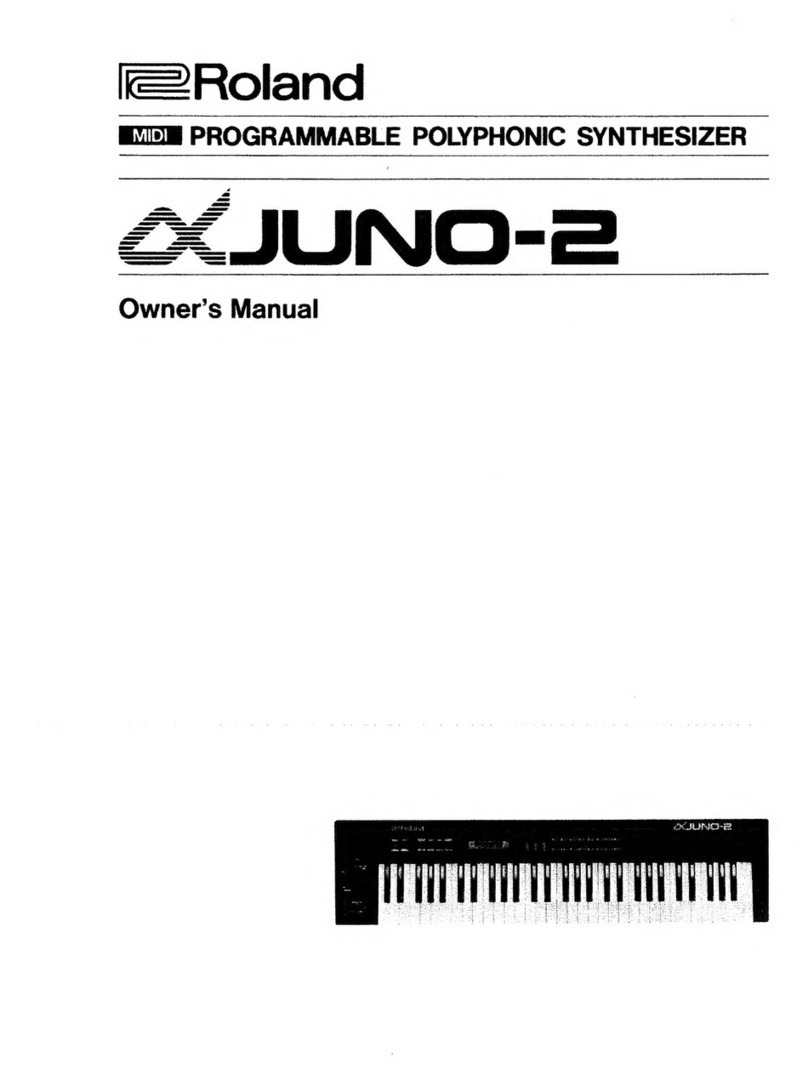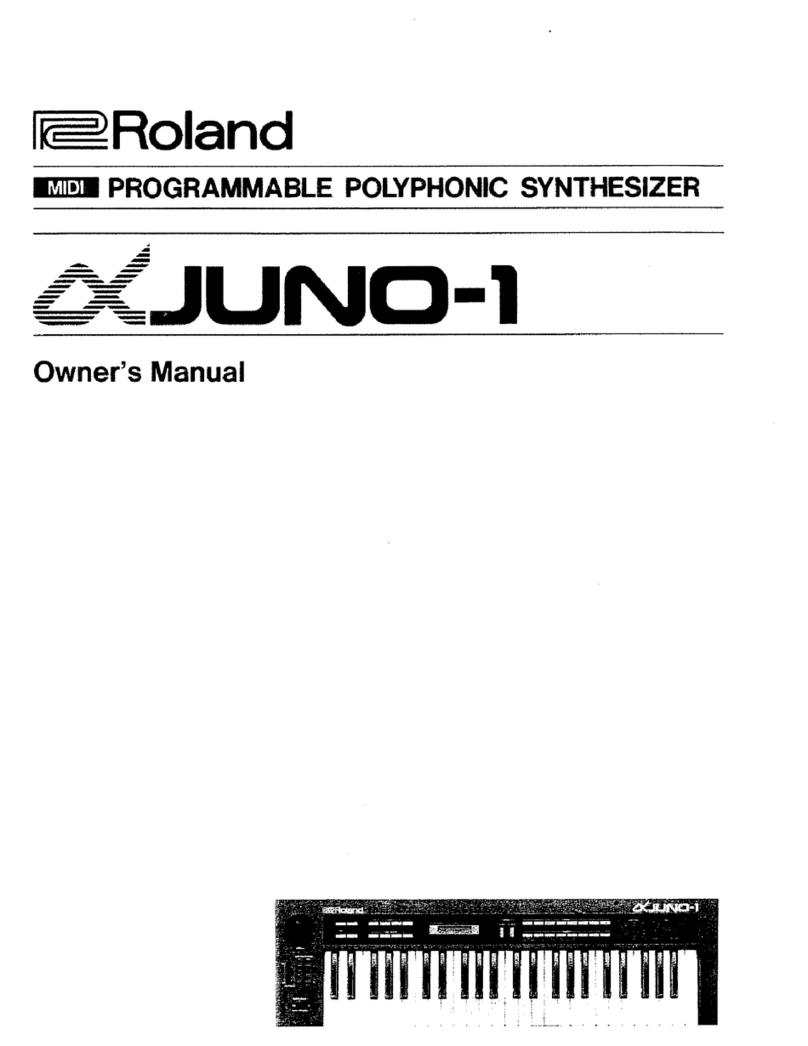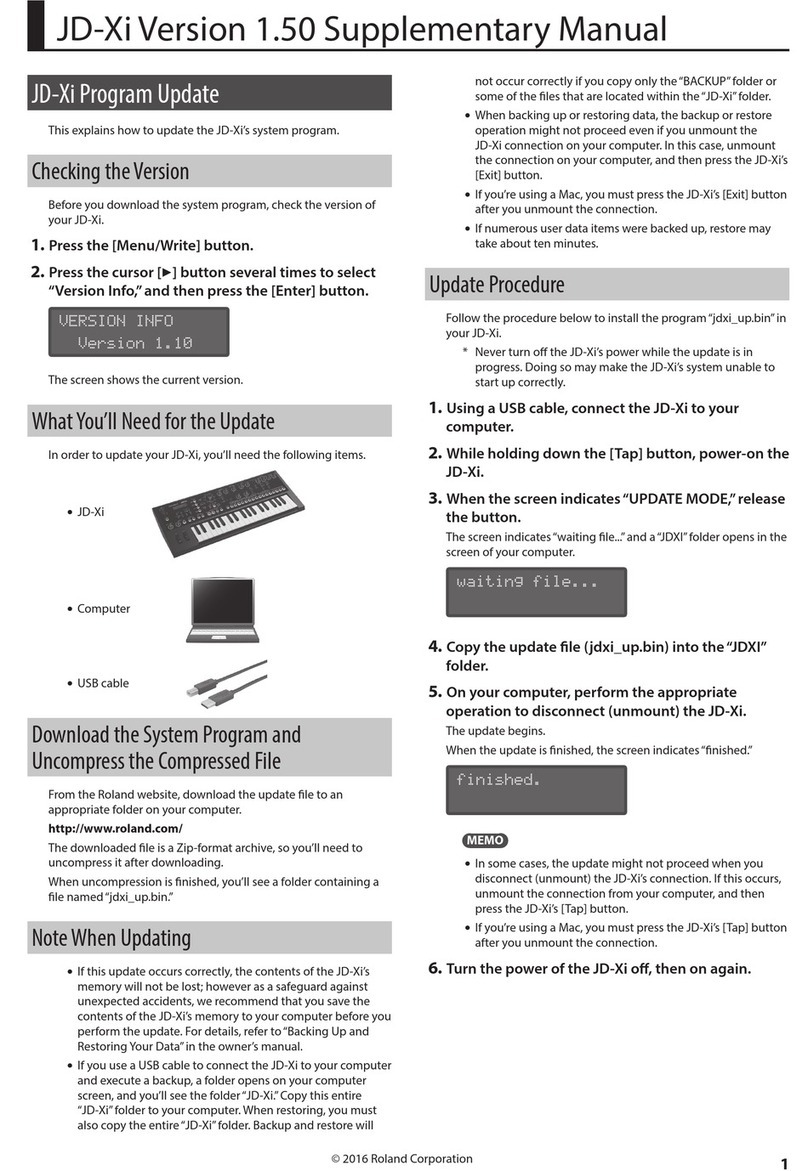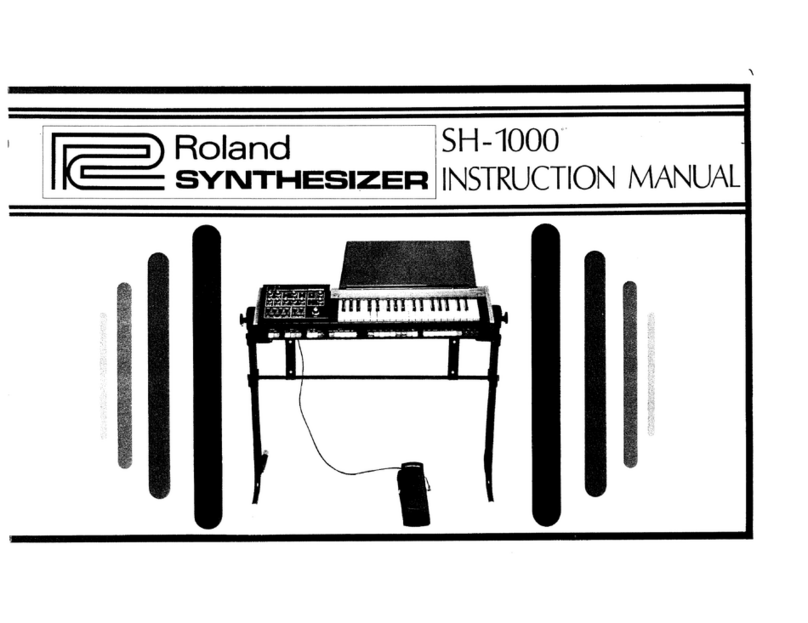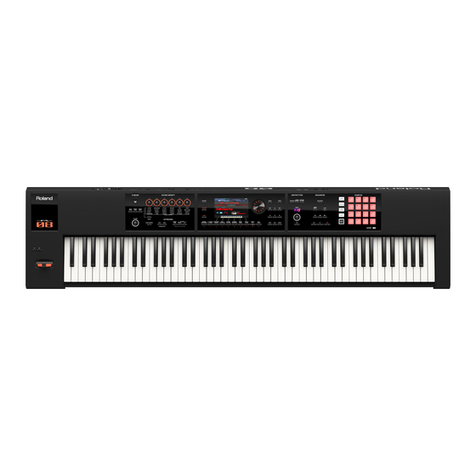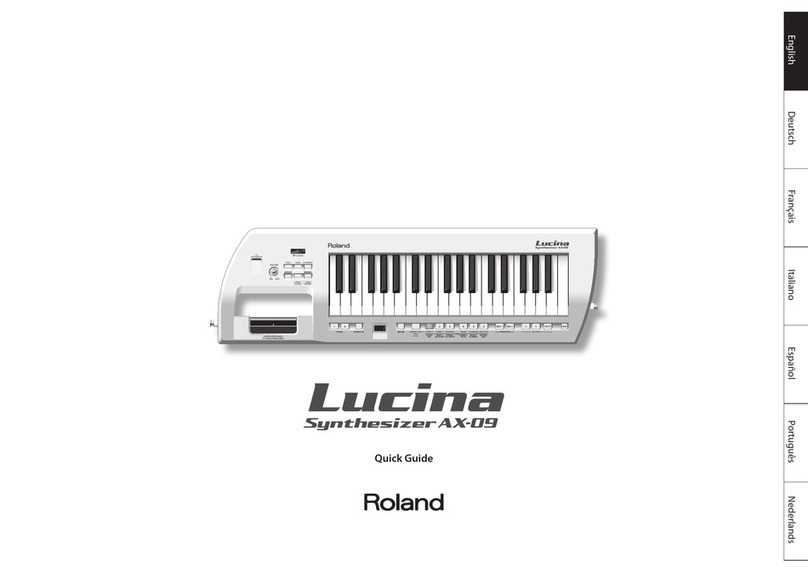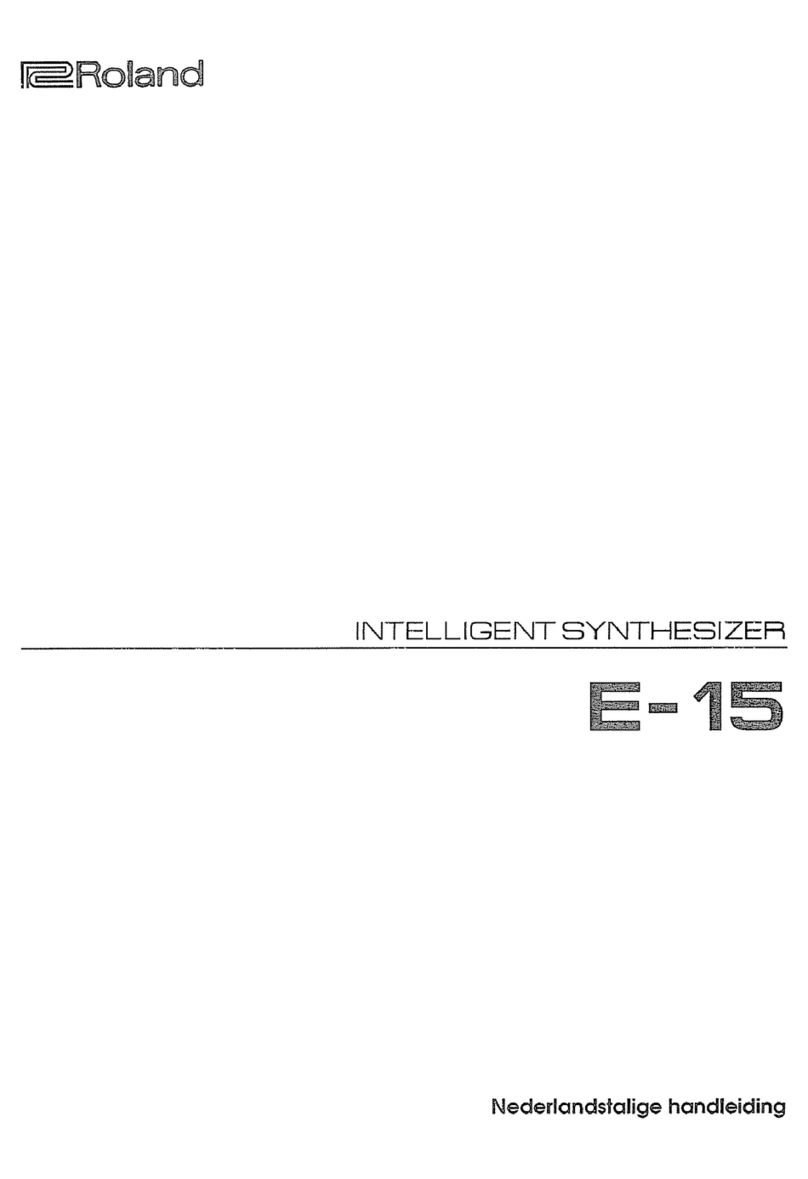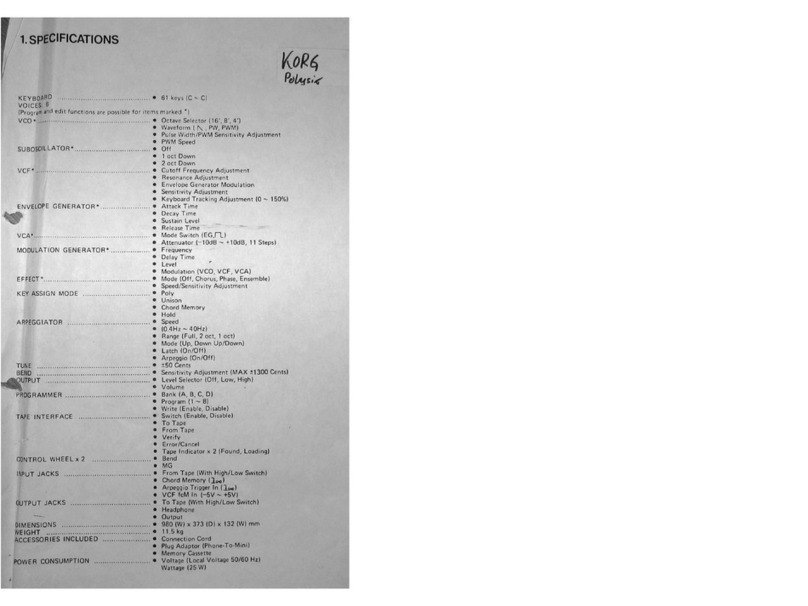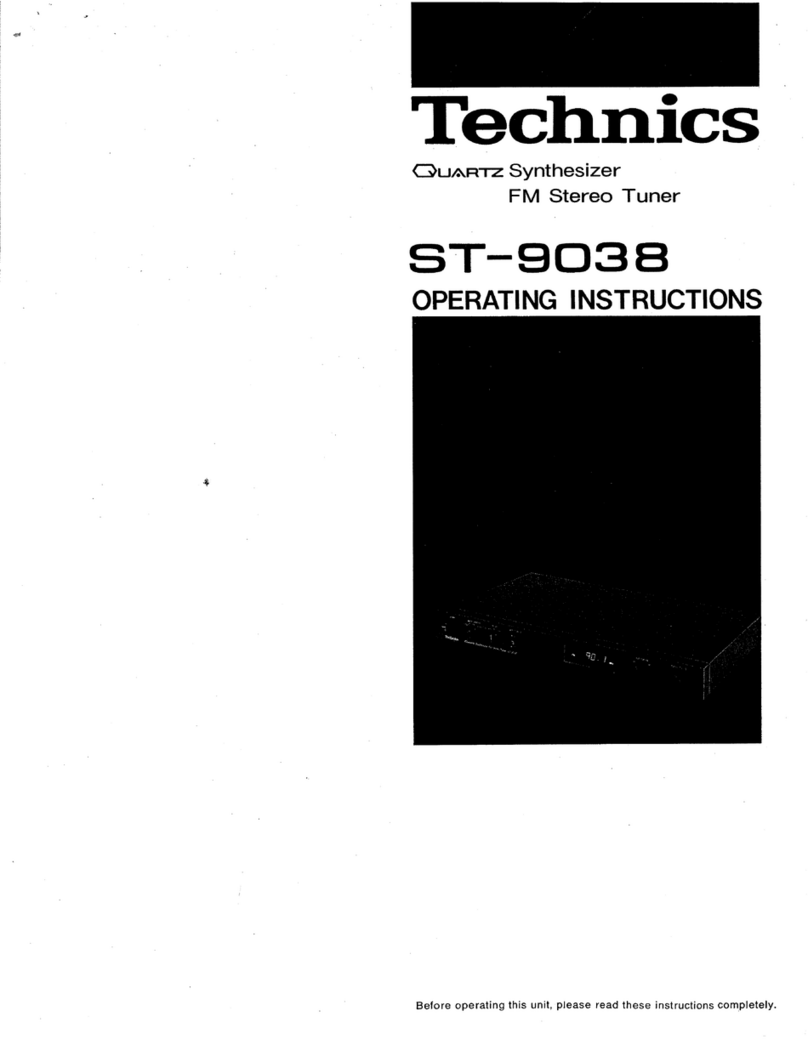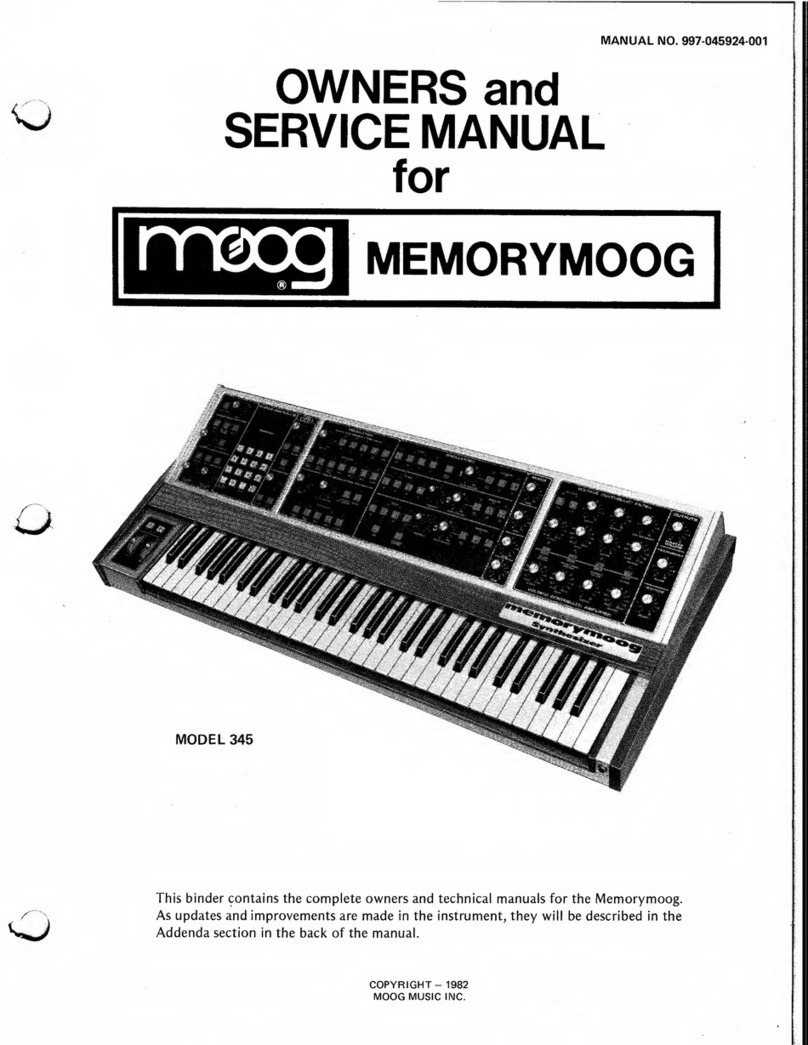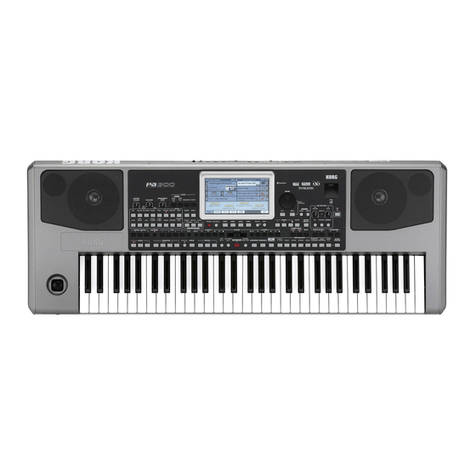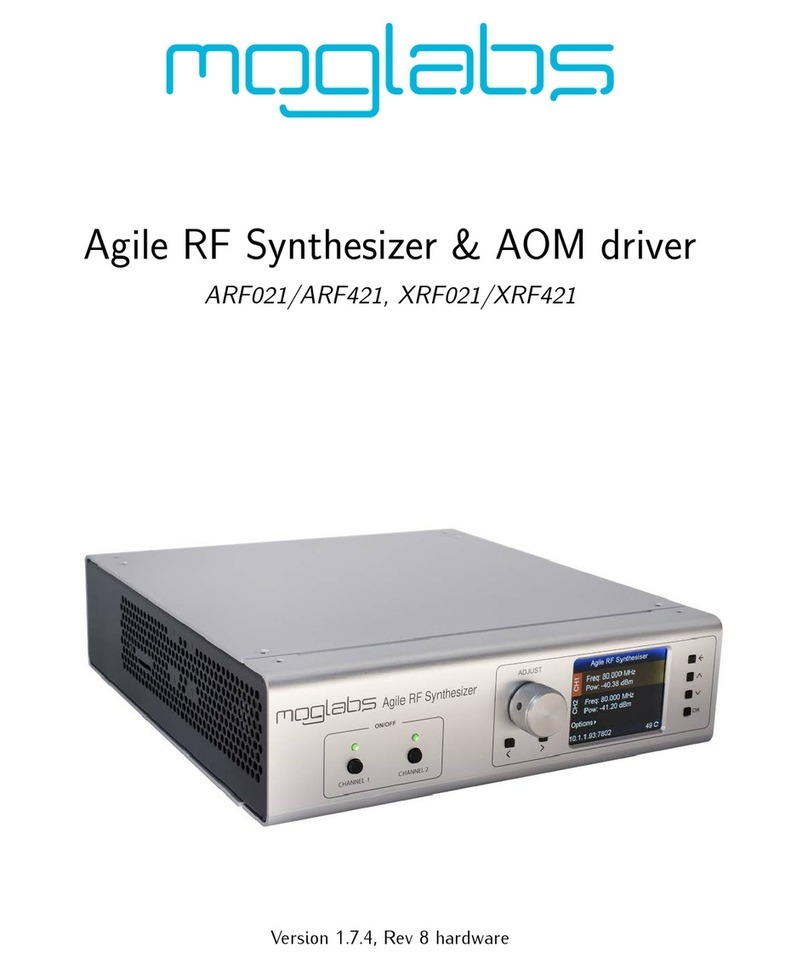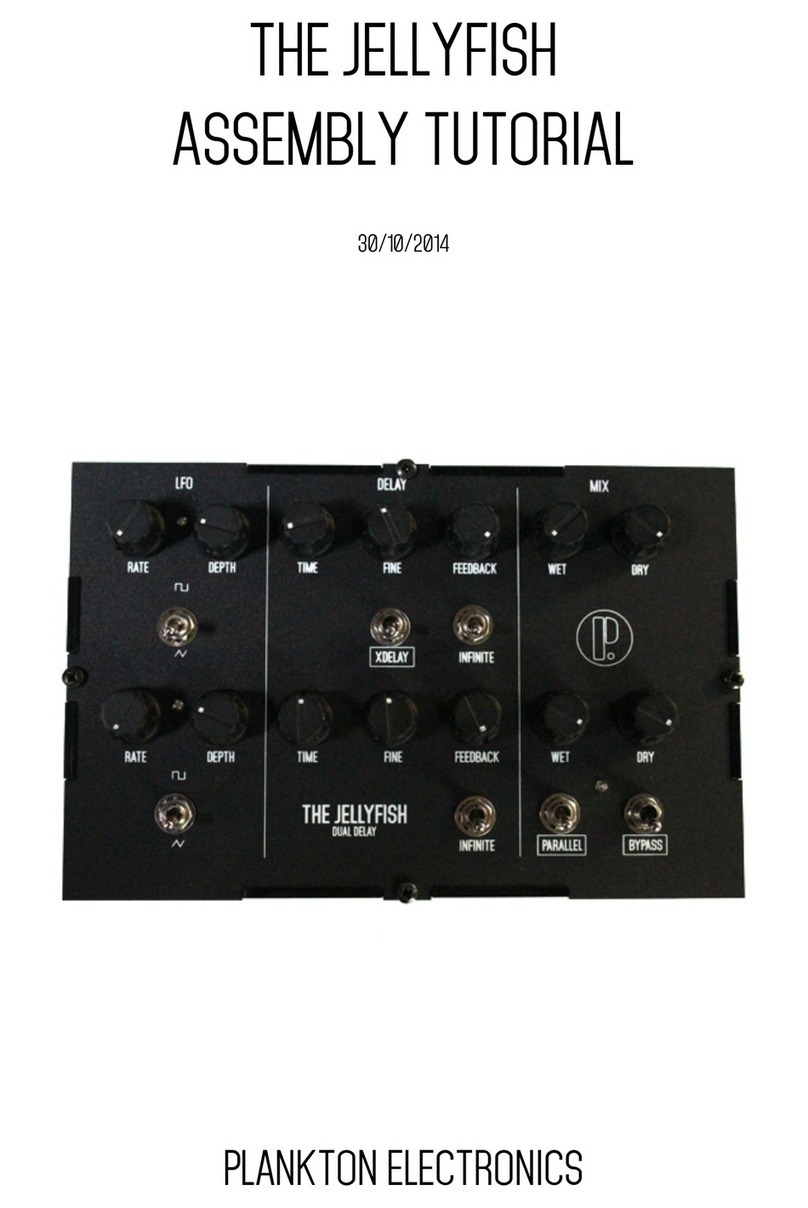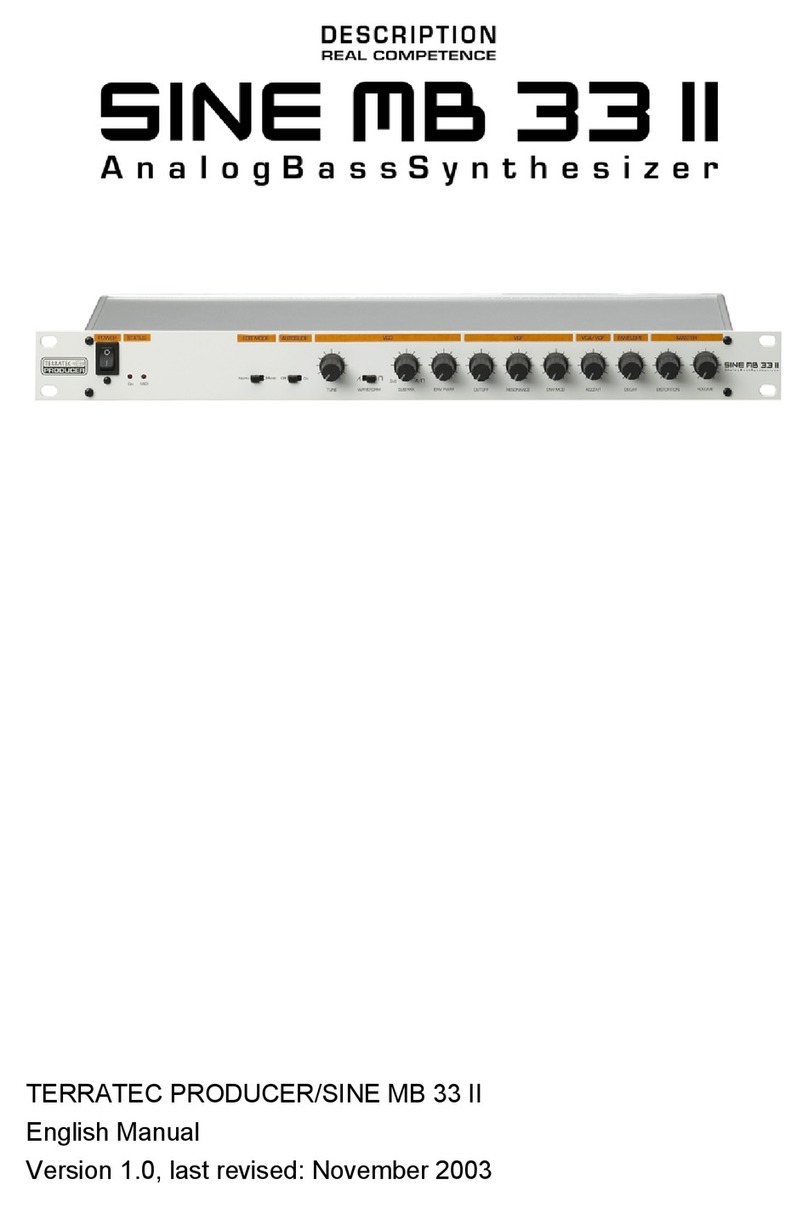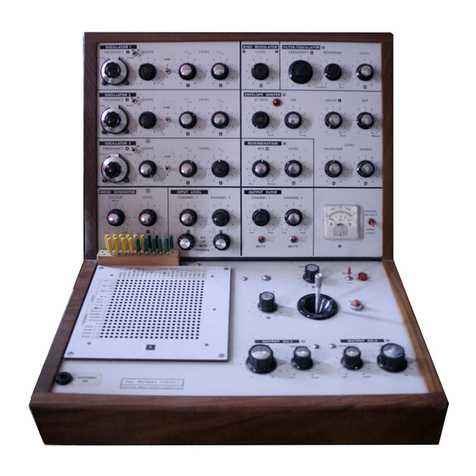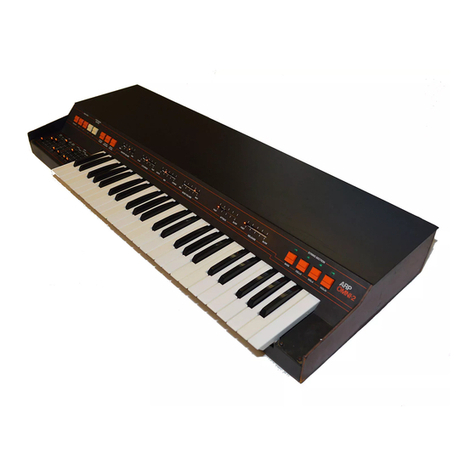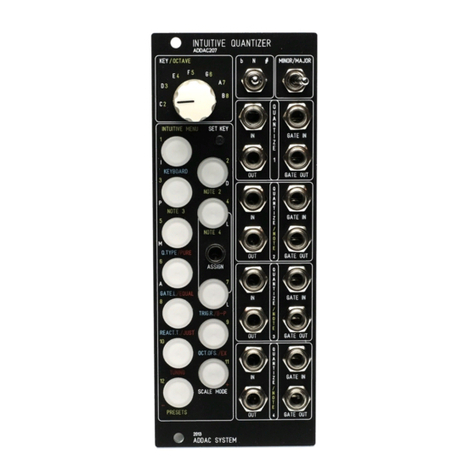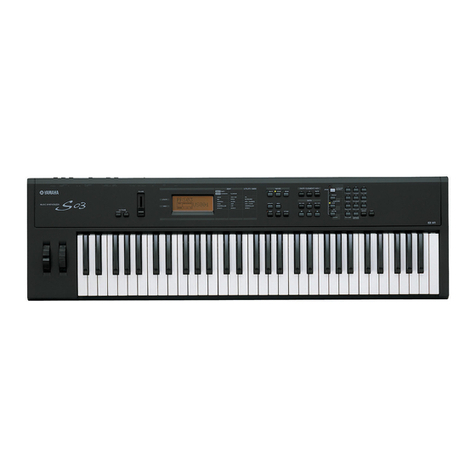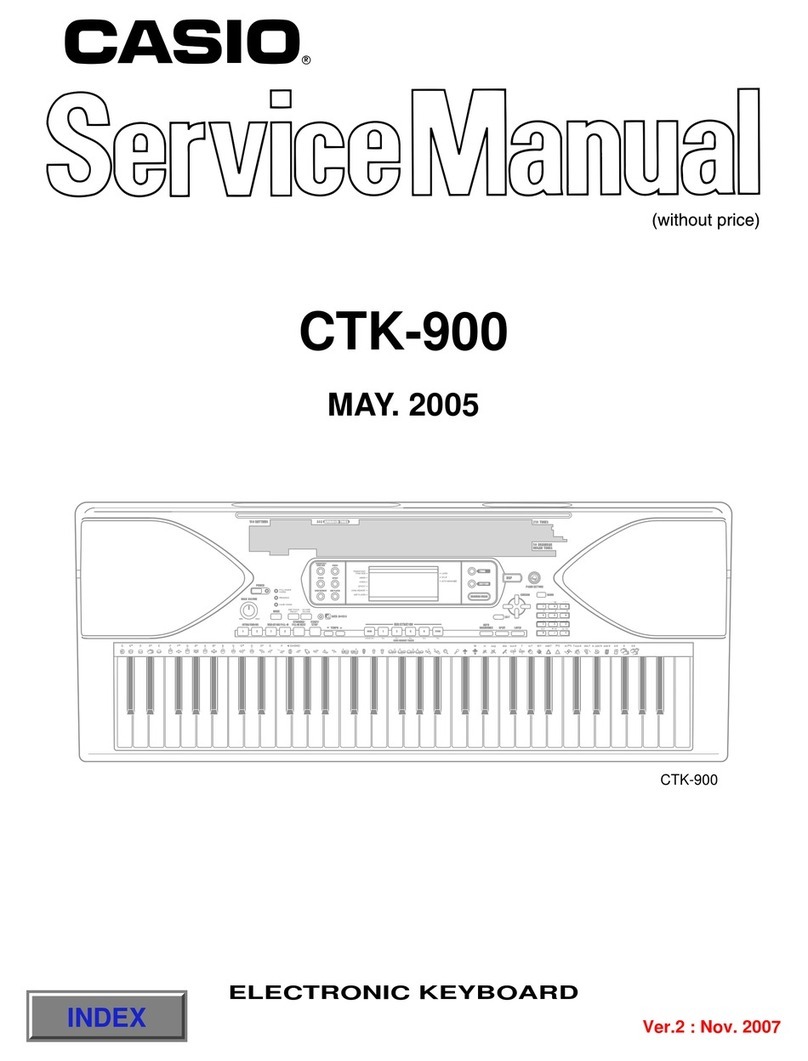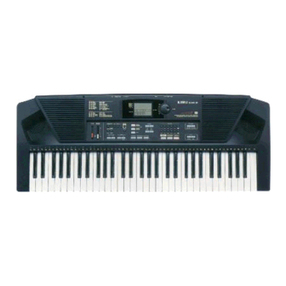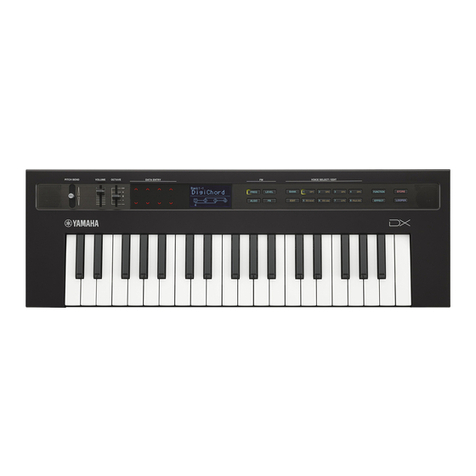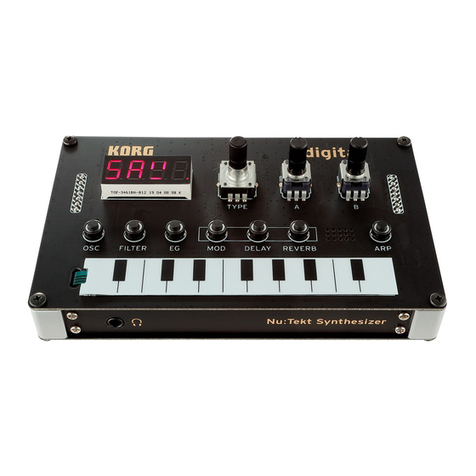TBS195 ©2003 Roland Corporation U.S.
www.RolandUS.com
Faxback #20228 Page 1
It’s a Fact…
The RS-50 allows musicians to forget about MIDI and
focus on playing. It sports an all-new collection of
CD-quality sounds, cool performance features and
simple direct-access buttons for selecting patches.
Features include:
• Affordable 61-note synthesizer with easy access
to Roland’s latest sounds
• Hundreds of new patches based on CD-quality
waveforms
• Direct-access buttons permit easy sound
selection by category
• Phrase/arpeggio generator and Multi Chord
memory
• D Beam controller for expressive realtime control
• Rhythm Guide metronome with preset patterns
and variations
Playing the Demo Songs
Use the following procedure to play the three demo
songs:
1. Press DEMO—beneath MODE—so it’s lit.
2. Use the VALUE -/+ buttons to select the song
you wish to hear.
Note: If you want to listen to all of the demo songs
played in order, select All Songs.
3. Press ENTER to begin playback.
4. Press EXIT to stop playback.
5. Press EXIT again to return to Play mode.
Selecting Patches
The RS-50 has 640 patches organized in categories
such as Piano, Guitar, Orchestra, etc. Use the
following procedure to select and audition patches:
1. Press PATCH—under MODE—so it’s lit.
2. Press 0-9 to select the desired category, as
labeled beneath the buttons.
3. Use the VALUE -/+ buttons to choose a sound
within the selected category.
4. You can:
• Play the keyboard
• Press AUDITION, under MODE, so it’s lit, to
automatically play a short sequence. Press
AUDITION again to stop playback.
Using the Phrase/Arpeggio Feature
The Phrase/Arpeggio feature plays musical motifs
and figures based on the note(s) you hold down.
1. Select a patch as previously described.
2. Press PHRASE/ARPEGGIO so it’s lit.
3. Use the VALUE -/+ buttons to select a phrase or
arpeggio.
4. Hold down one or more notes on the
keyboard—the selected phrase or arpeggio
plays.
Note: A “phrase” is a musical motif that’s triggered by
holding down a single note—“Phr” appears in the
display as it plays. An “arpeggio” requires that more
than one note be held down, and is shown as “Arp” in
the display.
5. Press PHRASE/ARPEGGIO so it’s not lit when
you’re finished.
Using the Chord Memory Feature
Chord Memory lets you play a chord by touching a
single key. You can assign all 12 notes in an octave
to play different chords, and then save them as a set.
(There are several chord sets already stored in the
RS-50 at the factory.)
1. Select a patch as previously described.
2. Press CHORD MEMORY so it’s lit.
3. Press a key on the keyboard to hear the chord it
plays.
4. Try a few keys to hear the chords they play.
5. Use the VALUE -/+ buttons to select other chord
sets.
6. Press CHORD MEMORY when you’re finished
so it’s no longer lit.
Using the D Beam Controller
The three buttons directly below the D Beam lens
select what the D Beam does—here’s how they work.
Solo Synth
1. Press SOLO SYNTH so it’s lit.
2. Hold down several notes on the
keyboard—notice they don’t yet sound—and
then move your hand over the D Beam. The
notes you’re holding down play according to your
hand movements.
